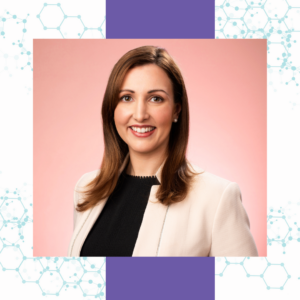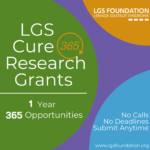2021 Grant Recipient – Linda Dalic
 Optimizing Stimulation Parameters for LGS Neuromodulation (OPTISTIM+)
Optimizing Stimulation Parameters for LGS Neuromodulation (OPTISTIM+)
Linda Dalic, PhD
University of Melbourne, Australia Neurologist/Epileptologist
Highlights:
- Seeks a better understanding of epilepsy neuromodulation in LGS patients.
- Explores the role of different target and stimulation parameters for LGS patients.
- Establishes standardized neuromodulation parameters for therapy.
Results:
- DBS works for those with LGS.
- The best location to stimulate with the DBS device in LGS patients is the in the brain region called the anterior and inferolateral “parvocellular” centromedian nucleus of the thalmaus. Those with LGS who had the DBS placed there had the best outcomes.
- Dr. Dalic and team published the following papers on these results.
- Deep learning for automated detection of generalized paroxysmal fast activity in Lennox-Gastaut syndrome
- Frontoparietal 18F-FDG-PET hypo-metabolism in Lennox-Gastaut syndrome: Further evidence highlighting the key network
- Paroxysmal fast activity is a biomarker of treatment response in deep brain stimulation for Lennox-Gastaut Syndrome
- Cognition, adaptive skills and epilepsy disability/severity in patients with Lennox-Gastaut syndrome undergoing deep brain stimulation for epilepsy in the ESTEL trial
- The Optimal Target and Connectivity for Deep Brain Stimulation in Lennox-Gastaut Syndrome
- DBS of Thalamic Centromedian Nucleus for Lennox-Gastaut Syndrome (ESTEL Trial)
- Dr Dalic’s recently completed her PhD through the University of Melbourne, investigating Neuromodulation in LGS – a severe form of epilepsy that typically becomes apparent during infancy or early childhood.
Lay Abstract:
Around 2-5% of people living with epilepsy have Lennox-Gastaut syndrome (LGS), a severe childhood-onset epilepsy. The long-term prognosis of LGS is poor; following onset, most patients continue to have seizures that do not respond to anti-seizure medications. There are associated intellectual disability and behavioral impairments into adulthood. Tonic seizures, which cause patients to suddenly and unpredictably stiffen and drop/fall to the ground, are a prominent and dangerous clinical feature, leading to injuries and frequent hospitalizations. Parents/caregivers face significant distress caused by physical and emotional demands of patient supervision, financial burdens associated with ongoing treatment of LGS, and uncertainty about the future.
Deep brain stimulation (DBS) is a therapy that has the potential to be a major new treatment option for patients with LGS. DBS is a surgical treatment involving the implantation of stimulating electrodes into the brain. The goal of DBS is to modulate pathological neuronal activity in the region of the stimulation site, as well as connected brain regions, with the intention of restoring normal brain network function. In patients with LGS, the thalamus is considered an ideal DBS target, given its widespread connections with the brain surface (i.e., the cortex). Prior uncontrolled studies have suggested a variable response to DBS therapy.
Our recently completed ESTEL trial is the first randomized control study (RCT) to demonstrate the benefit of DBS in LGS patients, with an overall median reduction of seizures by about 50%. We believe further benefits are achievable with optimized stimulator settings. OPTISTIM+ utilizes our unique cohort of carefully characterized patients to: 1) identify optimal stimulator settings for seizure suppression; 2) use functional MRI connectivity, and identify changes in epileptic brain networks induced by DBS.
 The LGS Foundation accepts unsolicited proposals year-round to seed new basic, translational, and clinical research projects on LGS. Projects may be funded at the $25,000, $50,000, or $75,000 level.
The LGS Foundation accepts unsolicited proposals year-round to seed new basic, translational, and clinical research projects on LGS. Projects may be funded at the $25,000, $50,000, or $75,000 level.
Updated 01/09/25 (KK)
